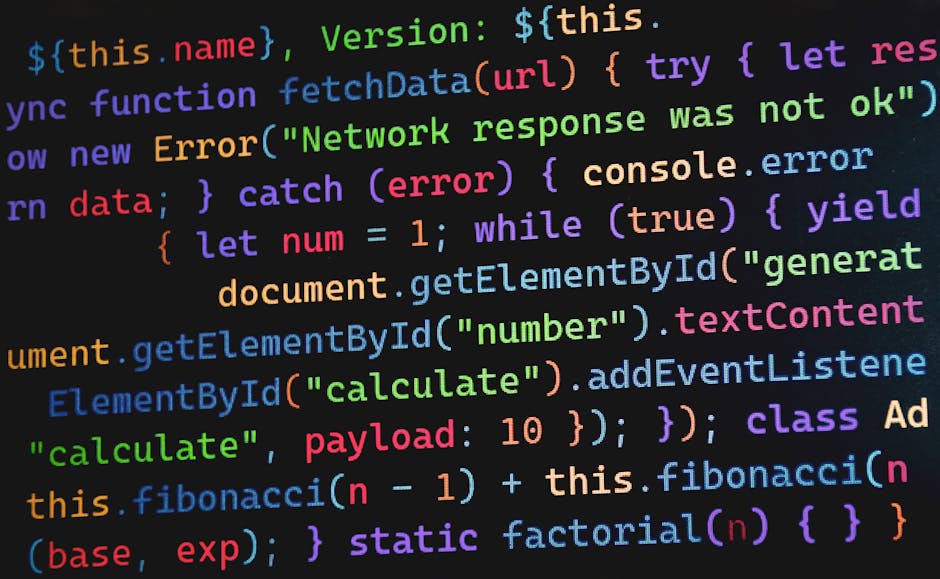API Management as Code: A Declarative Approach to Scaling API Operations - Related to token, operations, mangago:, code:, haven
API Management as Code: A Declarative Approach to Scaling API Operations

In the rapidly evolving landscape of software development, Application Programming Interfaces (APIs) have emerged as the fundamental building blocks of modern applications, facilitating seamless communication and data exchange between diverse software systems. However, as organizations experience growth and their digital ecosystems expand, the manual management of hundreds or even thousands of APIs becomes increasingly arduous and unsustainable. This is where the paradigm of API Management as Code emerges as a transformative solution, offering a declarative approach to the efficient and scalable management of API artifacts.
This article explores the key concepts behind API management as code, the benefits of automation, and how technologies like GitOps and the operator pattern streamline API lifecycle management.
The Complexity of Managing APIs at Scale.
Managing a single API might be a manageable task, but the landscape shifts dramatically as organizations scale their API offerings. The expansion of an API ecosystem introduces a multiplicative increase in complexity. Tasks that were once simple for a single API, such as managing authentication, versioning, enforcing security policies, implementing rate limits, and handling API deprecation, become increasingly intricate and demanding as the number of APIs grows into the hundreds. This can quickly overwhelm even the most seasoned API management teams.
API management as code emerges as a solution to these challenges. By applying the principles of automation and standardization, it offers a systematic and scalable approach to managing the growing complexity of API ecosystems. Through declarative configuration and infrastructure as code principles, API management as code enables teams to efficiently manage and control their APIs, ensuring consistency, security, and scalability across the entire API landscape.
API management as code represents a significant shift in how organizations handle the complexities of API operations. By applying the principles of version control and automation to API management, this approach brings numerous benefits in terms of scalability, consistency, and efficiency.
At its core, API management as code treats API configurations, policies, and deployment settings as code artifacts. These artifacts are stored in version control systems, allowing teams to track changes, collaborate effectively, and roll back to previous configurations if needed. This approach eliminates the need for manual configurations through UI-based consoles, which can be error-prone and time-consuming, especially as the number of APIs grows.
A key aspect of API management as code is the use of declarative languages or frameworks to define API specifications, security policies, and other governance rules. This declarative approach focuses on specifying the desired state of the API ecosystem, rather than the procedural steps to achieve it. This abstraction simplifies API management and makes it easier to reason about the system's behavior.
By treating API configurations as code, organizations can leverage automation tools and continuous integration/continuous deployment (CI/CD) pipelines to streamline API deployments and updates. Changes to API specifications or policies can trigger automated tests and deployment workflows, ensuring that APIs are always in a consistent and compliant state. This automation reduces the risk of human error and accelerates the delivery of new API capabilities.
API management as code offers several key benefits:
Automation and efficiency : Automating API lifecycle management reduces human intervention, minimizes errors, and accelerates API deployments.
: Automating API lifecycle management reduces human intervention, minimizes errors, and accelerates API deployments. Consistency and version control : By storing API configurations in Git repositories, teams can track changes, revert modifications, and ensure consistency across environments.
: By storing API configurations in Git repositories, teams can track changes, revert modifications, and ensure consistency across environments. Collaboration : Version control and code review practices facilitate collaboration among API development and operations teams. This leads to improved communication, knowledge sharing, and overall API quality.
: Version control and code review practices facilitate collaboration among API development and operations teams. This leads to advanced communication, knowledge sharing, and overall API quality. Agility : Automation and CI/CD pipelines enable rapid and reliable API deployments. This agility allows organizations to respond quickly to changing business needs and deliver new API elements faster.
: Automation and CI/CD pipelines enable rapid and reliable API deployments. This agility allows organizations to respond quickly to changing business needs and deliver new API attributes faster. Security and compliance : Automated governance policies ensure APIs meet security and compliance requirements without manual oversight.
: Automated governance policies ensure APIs meet security and compliance requirements without manual oversight. Scalability : Organizations can efficiently manage APIs across multiple environments without tedious, error-prone manual processes.
: Organizations can efficiently manage APIs across multiple environments without tedious, error-prone manual processes. Observability and monitoring : API management as code enables advanced tracking of API changes, making debugging and troubleshooting easier.
: API management as code enables advanced tracking of API changes, making debugging and troubleshooting easier. Auditability: With all API configurations stored in version control, organizations have a complete audit trail of changes. This improves transparency and accountability, which is especially significant in regulated industries.
GitOps is an extension of DevOps that treats Git as the source of truth for deployments. By leveraging Git repositories to store API configurations, organizations can:
Version and track API changes over time.
Implement automated workflows to sync configurations with API gateways.
Reduce deployment risks by using pull requests for changes and approvals.
By integrating API management as code with GitOps, teams can automate API deployments in a structured, repeatable manner.
One of the most powerful automation strategies in API management as code is the operator pattern. An operator is a software agent that continuously monitors a system’s desired state (as defined in API manifests) and ensures that the runtime environment matches this state.
The operator pattern follows a three-step cycle:
Observe: Continuously monitor API configurations stored in a Git repository. Analyze: Compare the desired state with the current state of the API platform. Act: Apply changes to synchronize the actual API environment with the declared configuration.
This automated process eliminates the need for manual API configuration and ensures seamless deployments across environments.
Below are the key steps to consider when working to implement API management as code into your workflow.
Step 1: Define API Artifacts Declaratively.
Organizations must define API configurations using structured manifests. These manifests can include:
Authentication and authorization policies.
All API artifacts should be stored in a Git repository, enabling version control and collaborative development. This repository serves as the single source of truth for API definitions.
Step 3: Use an API Operator to Enforce Configurations.
Deploy an API operator, such as the 3scale operator, to automate API provisioning. The operator continuously syncs API definitions from Git and applies them to the API management platform.
Step 4: Integrate With Continuous Delivery Pipelines.
By integrating API management as code with CI/CD tools like Tekton, ArgoCD, or Jenkins, teams can automate API deployments across multiple environments (development, testing, and production).
Real-World Example: API Management With ArgoCD.
Consider an organization using ArgoCD for GitOps-based API deployments. The workflow looks like this:
Developers define API configurations and push changes to Git. ArgoCD detects the changes and synchronizes API configurations with the API management platform. The API operator applies updates automatically, ensuring all services adhere to the desired state. Teams validate API deployments through automated tests and security scans before production rollout.
API Management as Code in Kubernetes Environments.
For organizations that have embraced Kubernetes as their container orchestration platform, the philosophy of API management as code finds a natural synergy with the concept of custom resource definitions (CRDs). CRDs, in essence, allow you to extend the Kubernetes API by defining your API resources, which can then be managed using the same Kubernetes tools and workflows you're already familiar with. This means that your API resources can be treated as first-class citizens within your Kubernetes environment, making them easier to manage and integrate into your existing cloud-native ecosystem.
By defining your API resources as CRDs, you're essentially modeling them as Kubernetes-native objects. This means that you can use kubectl to create, read, enhancement, and delete your API resources, just like you would with any other Kubernetes object ([website], Pods, Deployments, Services). This provides a consistent and unified management experience for all your resources, regardless of whether they're related to application code or API configuration.
Let's delve deeper into how this works and explore just some examples of the tools that facilitate this integration:
Red Hat 3scale Operator: The Red Hat 3scale Operator is a Kubernetes Operator specifically designed for managing 3scale API gateways. By using the 3scale Operator, you can define your API gateway configuration as a CRD, and the Operator will take care of creating and managing the underlying 3scale resources for you. This eliminates the need to manually interact with the 3scale API or control plane, and it allows you to manage your API gateway configuration using the same declarative approach you use for the rest of your Kubernetes resources.
Kong Ingress Controller: The Kong Ingress Controller is a Kubernetes Ingress Controller that leverages the Kong API Gateway. By using the Kong Ingress Controller, you can define your API routing rules as Kubernetes Ingress resources, which are then translated into Kong configuration by the controller. This allows you to manage your API routing using Kubernetes-native constructs, and it provides a seamless integration between your API gateway and your Kubernetes environment.
[website] Gloo Mesh: [website] Gloo Mesh is a service mesh management plane that provides advanced traffic management and security capabilities for your microservices. By using Gloo Mesh, you can integrate your API gateway with your service mesh, enabling capabilities such as API observability, traffic routing based on API context, and fine-grained access control for your APIs. This provides a unified control plane for managing both your API gateway and your service mesh, and it allows you to leverage the full power of your service mesh to enhance your API management capabilities.
API environments can vary widely based on the organization’s architecture. An environment can be defined as:
A unique API tenant within a multi-cluster setup.
A fully isolated API deployment on a dedicated cluster.
The responsibility of managing API artifacts declaratively can fall on different teams, including:
Developers, who define API specifications and configurations.
Platform Engineers, who manage API infrastructure and automation.
API Owners, who ensure business and compliance requirements are met.
By integrating API management as code into CI/CD pipelines, all stakeholders can contribute to API governance while maintaining a streamlined workflow.
API management as code is a game-changer for organizations managing complex API ecosystems. By adopting a declarative approach with GitOps and the operator pattern, teams can automate API lifecycle management, improve security, and scale efficiently. Whether deploying APIs in Kubernetes, OpenShift, or traditional environments, API management as code provides the automation and governance needed for modern API-first architectures.
Organizations that embrace this methodology will not only streamline their API operations, but also ensure higher reliability, faster deployments, and greater control over their API infrastructure. If you’re looking to modernize your API management strategy, now is the time to explore API Management as Code.
Are you using API Management as Code in your organization? Share your thoughts and experiences in the comments!
This week's Java roundup for February 24th, 2025 aspects news highlighting: JEP 502, Stable Values (Preview), Proposed to Target for JDK 25; mileston......
A data culture is the collective behaviors and beliefs of people who value, practice, and encourage the use of data and AI to propel organizational tr......
Software security expert Tanya Janca, author of Alice and Bob Learn Secure Coding and Staff DevRel at AppSec firm Semgrep, joins Ryan to talk about......
Steps to create Crypto Token Development Using of AI

Cryptocurrency tokens are digital assets created and operated on a blockchain. While currencies such as Bitcoin normally only act with money, most tokens are usually minted on the very top of other blockchains such as Ethereum, Solana, or Binance Smart Chain. They have multiple functions like giving ownership rights and providing access to services, governance rights, and real-world assets like real estate or commodities.
Tokens are widely used in decentralized applications (dApps) to keep their support for applications such as staking, voting, rewards, and asset transfers between the ecosystem. The flexibility of tokens has made them building blocks for many fields, such as decentralized finance (DeFi), gaming (GameFi), and other non-fungible assets (NFTs) and tokenized investments. This encourages innovation within the whole Web3 ecosystem.
The crypto token development process refers to creating virtual tokens existing on a particular blockchain network. These tokens may represent various assets: cryptos, utility tokens, securities, or even NFTs. Unlike separate cryptocurrencies, such as bitcoins, they will probably be built on an already existing blockchain platform, such as Ethereum, Binance Smart Chain, or Solana, using smart contracts to define their functionalities.
The overall process of development includes designing the architecture of the token, configuring the tokenomics, auditing the security, and deploying the token for usage within real life dApps, exchanges, and blockchain ecosystems. With the advent and evolution of blockchain technology, it is found that much development adoption in crypto tokens is also being pursued by AI.
AI crypto tokens can be described as digital assets that connect artificial intelligence capabilities with blockchain technology; such tokens often have dual functions: in some instances, they serve as conventional cryptocurrencies for payment and governance, while also presenting capability to monetize or interact with AI platforms, applications, or ecosystems.
Some AI tokens provide access to AI services for activities such as data processing, machine learning models, or predictive analytics tools that are deployed on decentralized networks, yet other AI tokens reward participants who provide computing power, data, or training models for an AI network. With the increasing convergence of AI and blockchain technology, AI crypto tokens are becoming key building blocks of decentralized AI platforms, providing income generation and governance to token holders.
Artificial intelligence is also increasingly being used by various crypto token development companies to ensure maximum efficiency, security, and scalability as the blockchain industry continues to evolve. In fact, AI is revolutionizing token creation processes way past blockchain technology: automation of smart contract generation or optimization of tokenomics are some common examples.
AI uses huge volumes of blockchain data to actually predict market trends, which helps the business design tokens with sustainable economic models. On the very same note, AI applications help in auditing the smart contracts by finding any vulnerable points before the deployment, thus lowering possible exploits. Machine learning algorithms enhance fraud detection and compliance to regulations, thereby ensuring that the token projects are in line with international financial laws.
Besides, AI analytics capabilities help companies gauge the sentiments of investors and market dynamics, allowing them to devise token launch strategies for maximum adoption. The trajectory of AI advancement will give an upper hand to token development companies that integrate AI-driven solutions for enhanced security, efficiency, and adaptability of digital assets.
Steps to create Crypto Token Development Using of AI.
The process of developing a crypto token has traditionally required technical programming skills, economic modeling, and smart contract expertise. However, the introduction of artificial intelligence will speed up, enhance, and partially automate these steps.
Design Tokenomics with AI Modeling Tools.
Predict and Optimize Token Launch Timing.
Automate Community Engagement & Airdrops.
Monitor Post-Launch Performance and Adapt Tokenomic.
Ensure Regulatory and Security Compliance.
The development of crypto tokens has now gone a long way from just forming digital assets on a blockchain. This has developed into a sophisticated blend of technology with economic modeling, security considerations, and regulatory compliance. Now mature enough in their ecosystems, developers are discovering the more advanced use cases of tokens common such as powering decentralized finance (DeFi) platforms, enabling governance in DAOs, and the tokenization of real-world assets (RWAs).
The future promises to be very well endowed with more efficient, safer, and more flexible token developments, from AI capabilities to cross-chain interoperability solutions and even eco-friendly blockchain protocols. However, it depends on the careful balance between leaning in innovation and at the same time leaning in sustainability and user-centric design to attain success in this area. Crypto tokens are just digital currencies; at some point, they will eventually replace the building blocks of decentralized economies and an entirely new open-programmable financial system.
Meta has not long ago introduced data logs as part of their Download Your Information (DYI) tool, enabling individuals to access additional data about their pro......
Software security expert Tanya Janca, author of Alice and Bob Learn Secure Coding and Staff DevRel at AppSec organization Semgrep, joins Ryan to talk about......
Google Cloud has introduced the public beta launch of Gen AI Toolbox for Databases, an open-source server developed in collaboration with LangChain. Th......
Exploring Mangago: The Digital Haven for Manga Enthusiasts

Manga, the rich and diverse world of Japanese comics, has captivated readers globally for decades. With the rise of digital platforms, accessing these stories has become more convenient than ever. Among these platforms, Mangago has emerged as a popular destination for manga aficionados. This blog post delves into the various facets of Mangago, offering insights into its offerings, user experience, legal considerations, and more.
Established in 2015, Mangago quickly positioned itself as a comprehensive platform for manga lovers worldwide. Its mission centers on providing free access to a vast array of manga titles, catering to diverse tastes and preferences. The platform's commitment to accessibility has garnered it a substantial user base, making it a notable player in the online manga community.
One of Mangago's standout aspects is its user-friendly interface. Designed with readers in mind, the platform ensures seamless navigation through its extensive library. customers can effortlessly search for specific titles, explore genres, and discover new series. The intuitive layout enhances the overall reading experience, allowing customers to immerse themselves fully in their chosen stories.
Mangago boasts an impressive collection of manga, spanning various genres such as shounen, shoujo, seinen, and josei. This extensive library ensures that readers of all preferences can find content that resonates with them. From action-packed adventures to heartfelt romances, Mangago's diverse offerings cater to a global audience, reflecting the universal appeal of manga.
Beyond being a reading platform, Mangago fosters a vibrant community where individuals can interact, share recommendations, and discuss their favorite series. functions such as comment sections and forums enable readers to connect, creating a sense of camaraderie among manga enthusiasts. This interactive aspect enriches the user experience, transforming solitary reading into a shared journey.
High-quality scans are a hallmark of Mangago, ensuring that readers can appreciate the intricate artwork characteristic of manga. The platform's commitment to quality enhances readability, allowing clients to engage deeply with the content. Additionally, Mangago's accessibility across various devices, including desktops and mobile phones, ensures that readers can enjoy their favorite series anytime, anywhere.
While Mangago offers free access to a vast array of manga, it operates in a legal gray area. Many titles are uploaded without proper licensing, raising concerns about copyright infringement. This practice not only poses legal risks for the platform but also impacts the livelihoods of creators and publishers. Readers are encouraged to support the manga industry by purchasing official releases whenever possible, ensuring that creators receive due compensation for their work.
For readers seeking legal and secure alternatives, several platforms offer licensed manga content:
Crunchyroll: Renowned for anime streaming, Crunchyroll also provides a substantial manga library, offering both free and premium access.
Manga Plus: Operated by Shueisha, Manga Plus offers free access to a selection of popular titles, supporting creators directly.
Webtoons: Specializing in webcomics, Webtoons presents a diverse range of content, including many manga-inspired series, available for free.
These platforms ensure that readers can enjoy their favorite series while supporting the industry ethically.
9. The Future of Digital Manga Consumption.
The landscape of manga consumption is continually evolving, with digital platforms playing a pivotal role in this transformation. As technology advances, platforms like Mangago may face increased scrutiny regarding legal compliance and user safety. Simultaneously, legitimate services are expanding their offerings, providing readers with more options to access content legally. This shift underscores the importance of supporting official channels to ensure the sustainability and growth of the manga industry.
Mangago has undeniably carved a niche for itself in the realm of online manga platforms, offering readers free access to a vast array of titles. However, the legal and ethical considerations surrounding its operation cannot be overlooked. As consumers, making informed choices about where and how we access content is crucial. By supporting legitimate platforms, we contribute to the vitality of the manga industry, ensuring that creators can continue to craft the stories we cherish.
In the rapidly evolving landscape of software development, Application Programming Interfaces (APIs) have emerged as the fundamental building blocks o......
Spring Boot is a popular framework for building Java applications, especially microservices. However, as applications grow in size and complexity, sta......
Google Cloud has introduced the public beta launch of Gen AI Toolbox for Databases, an open-source server developed in collaboration with LangChain. Th......
Market Impact Analysis
Market Growth Trend
| 2018 | 2019 | 2020 | 2021 | 2022 | 2023 | 2024 |
|---|---|---|---|---|---|---|
| 7.5% | 9.0% | 9.4% | 10.5% | 11.0% | 11.4% | 11.5% |
Quarterly Growth Rate
| Q1 2024 | Q2 2024 | Q3 2024 | Q4 2024 |
|---|---|---|---|
| 10.8% | 11.1% | 11.3% | 11.5% |
Market Segments and Growth Drivers
| Segment | Market Share | Growth Rate |
|---|---|---|
| Enterprise Software | 38% | 10.8% |
| Cloud Services | 31% | 17.5% |
| Developer Tools | 14% | 9.3% |
| Security Software | 12% | 13.2% |
| Other Software | 5% | 7.5% |
Technology Maturity Curve
Different technologies within the ecosystem are at varying stages of maturity:
Competitive Landscape Analysis
| Company | Market Share |
|---|---|
| Microsoft | 22.6% |
| Oracle | 14.8% |
| SAP | 12.5% |
| Salesforce | 9.7% |
| Adobe | 8.3% |
Future Outlook and Predictions
The Management Code Declarative landscape is evolving rapidly, driven by technological advancements, changing threat vectors, and shifting business requirements. Based on current trends and expert analyses, we can anticipate several significant developments across different time horizons:
Year-by-Year Technology Evolution
Based on current trajectory and expert analyses, we can project the following development timeline:
Technology Maturity Curve
Different technologies within the ecosystem are at varying stages of maturity, influencing adoption timelines and investment priorities:
Innovation Trigger
- Generative AI for specialized domains
- Blockchain for supply chain verification
Peak of Inflated Expectations
- Digital twins for business processes
- Quantum-resistant cryptography
Trough of Disillusionment
- Consumer AR/VR applications
- General-purpose blockchain
Slope of Enlightenment
- AI-driven analytics
- Edge computing
Plateau of Productivity
- Cloud infrastructure
- Mobile applications
Technology Evolution Timeline
- Technology adoption accelerating across industries
- digital transformation initiatives becoming mainstream
- Significant transformation of business processes through advanced technologies
- new digital business models emerging
- Fundamental shifts in how technology integrates with business and society
- emergence of new technology paradigms
Expert Perspectives
Leading experts in the software dev sector provide diverse perspectives on how the landscape will evolve over the coming years:
"Technology transformation will continue to accelerate, creating both challenges and opportunities."
— Industry Expert
"Organizations must balance innovation with practical implementation to achieve meaningful results."
— Technology Analyst
"The most successful adopters will focus on business outcomes rather than technology for its own sake."
— Research Director
Areas of Expert Consensus
- Acceleration of Innovation: The pace of technological evolution will continue to increase
- Practical Integration: Focus will shift from proof-of-concept to operational deployment
- Human-Technology Partnership: Most effective implementations will optimize human-machine collaboration
- Regulatory Influence: Regulatory frameworks will increasingly shape technology development
Short-Term Outlook (1-2 Years)
In the immediate future, organizations will focus on implementing and optimizing currently available technologies to address pressing software dev challenges:
- Technology adoption accelerating across industries
- digital transformation initiatives becoming mainstream
These developments will be characterized by incremental improvements to existing frameworks rather than revolutionary changes, with emphasis on practical deployment and measurable outcomes.
Mid-Term Outlook (3-5 Years)
As technologies mature and organizations adapt, more substantial transformations will emerge in how security is approached and implemented:
- Significant transformation of business processes through advanced technologies
- new digital business models emerging
This period will see significant changes in security architecture and operational models, with increasing automation and integration between previously siloed security functions. Organizations will shift from reactive to proactive security postures.
Long-Term Outlook (5+ Years)
Looking further ahead, more fundamental shifts will reshape how cybersecurity is conceptualized and implemented across digital ecosystems:
- Fundamental shifts in how technology integrates with business and society
- emergence of new technology paradigms
These long-term developments will likely require significant technical breakthroughs, new regulatory frameworks, and evolution in how organizations approach security as a fundamental business function rather than a technical discipline.
Key Risk Factors and Uncertainties
Several critical factors could significantly impact the trajectory of software dev evolution:
Organizations should monitor these factors closely and develop contingency strategies to mitigate potential negative impacts on technology implementation timelines.
Alternative Future Scenarios
The evolution of technology can follow different paths depending on various factors including regulatory developments, investment trends, technological breakthroughs, and market adoption. We analyze three potential scenarios:
Optimistic Scenario
Rapid adoption of advanced technologies with significant business impact
Key Drivers: Supportive regulatory environment, significant research breakthroughs, strong market incentives, and rapid user adoption.
Probability: 25-30%
Base Case Scenario
Measured implementation with incremental improvements
Key Drivers: Balanced regulatory approach, steady technological progress, and selective implementation based on clear ROI.
Probability: 50-60%
Conservative Scenario
Technical and organizational barriers limiting effective adoption
Key Drivers: Restrictive regulations, technical limitations, implementation challenges, and risk-averse organizational cultures.
Probability: 15-20%
Scenario Comparison Matrix
| Factor | Optimistic | Base Case | Conservative |
|---|---|---|---|
| Implementation Timeline | Accelerated | Steady | Delayed |
| Market Adoption | Widespread | Selective | Limited |
| Technology Evolution | Rapid | Progressive | Incremental |
| Regulatory Environment | Supportive | Balanced | Restrictive |
| Business Impact | Transformative | Significant | Modest |
Transformational Impact
Technology becoming increasingly embedded in all aspects of business operations. This evolution will necessitate significant changes in organizational structures, talent development, and strategic planning processes.
The convergence of multiple technological trends—including artificial intelligence, quantum computing, and ubiquitous connectivity—will create both unprecedented security challenges and innovative defensive capabilities.
Implementation Challenges
Technical complexity and organizational readiness remain key challenges. Organizations will need to develop comprehensive change management strategies to successfully navigate these transitions.
Regulatory uncertainty, particularly around emerging technologies like AI in security applications, will require flexible security architectures that can adapt to evolving compliance requirements.
Key Innovations to Watch
Artificial intelligence, distributed systems, and automation technologies leading innovation. Organizations should monitor these developments closely to maintain competitive advantages and effective security postures.
Strategic investments in research partnerships, technology pilots, and talent development will position forward-thinking organizations to leverage these innovations early in their development cycle.
Technical Glossary
Key technical terms and definitions to help understand the technologies discussed in this article.
Understanding the following technical concepts is essential for grasping the full implications of the security threats and defensive measures discussed in this article. These definitions provide context for both technical and non-technical readers.
infrastructure as code intermediate
DevOps intermediate
interface intermediate
platform intermediate
API beginner
 How APIs enable communication between different software systems
How APIs enable communication between different software systems

